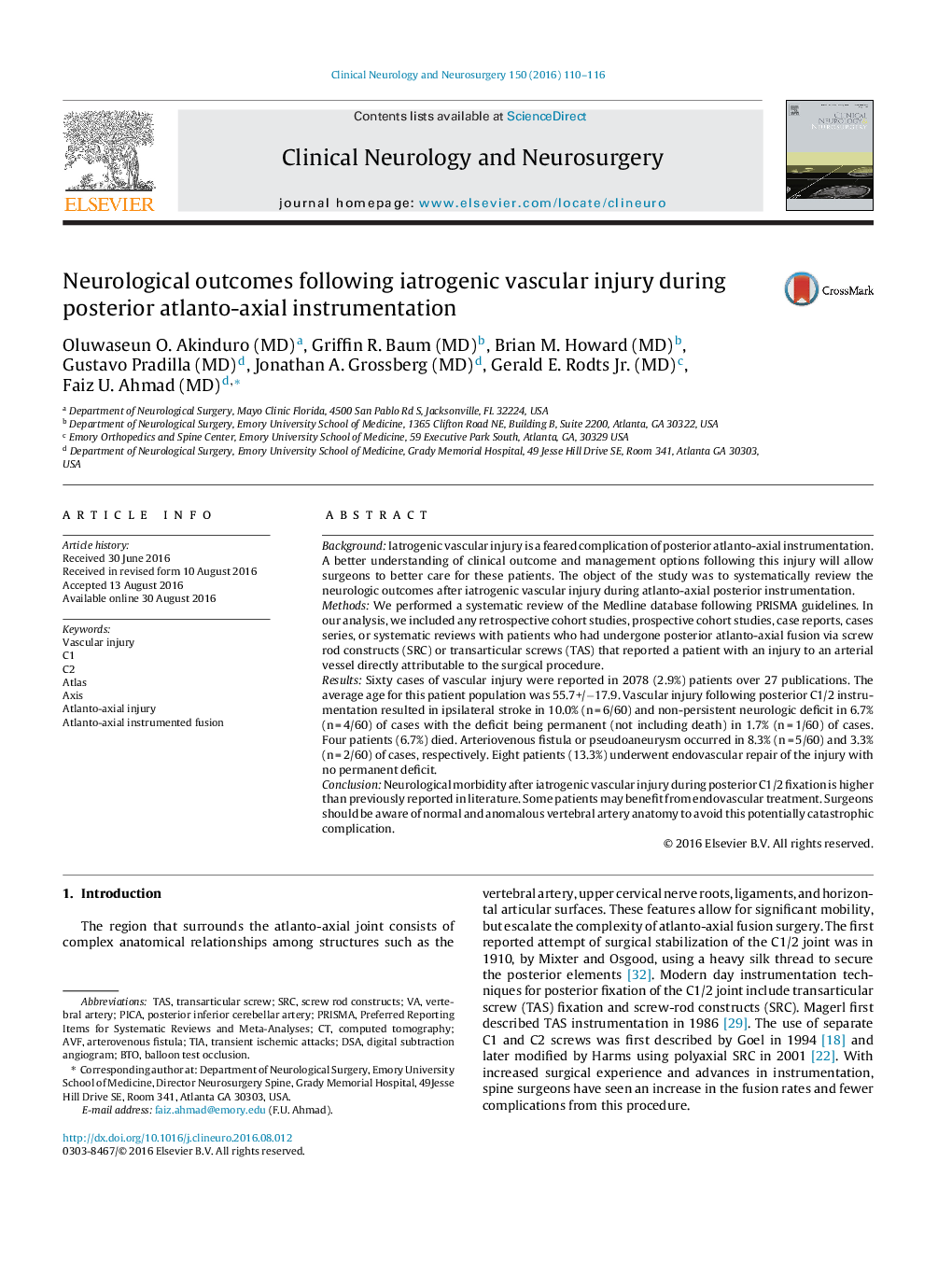| کد مقاله | کد نشریه | سال انتشار | مقاله انگلیسی | نسخه تمام متن |
|---|---|---|---|---|
| 3039440 | 1579672 | 2016 | 7 صفحه PDF | دانلود رایگان |
• Vascular injury during C1/2 fixation may be higher than previously reported.
• Morbidity after injury can result in deficits, stroke, or death.
• Be aware of vertebral artery anatomy to avoid this complication.
• Consider pre-operative imaging modalities for better planning.
• Some patients may benefit from endovascular treatment.
BackgroundIatrogenic vascular injury is a feared complication of posterior atlanto-axial instrumentation. A better understanding of clinical outcome and management options following this injury will allow surgeons to better care for these patients. The object of the study was to systematically review the neurologic outcomes after iatrogenic vascular injury during atlanto-axial posterior instrumentation.MethodsWe performed a systematic review of the Medline database following PRISMA guidelines. In our analysis, we included any retrospective cohort studies, prospective cohort studies, case reports, cases series, or systematic reviews with patients who had undergone posterior atlanto-axial fusion via screw rod constructs (SRC) or transarticular screws (TAS) that reported a patient with an injury to an arterial vessel directly attributable to the surgical procedure.ResultsSixty cases of vascular injury were reported in 2078 (2.9%) patients over 27 publications. The average age for this patient population was 55.7+/−17.9. Vascular injury following posterior C1/2 instrumentation resulted in ipsilateral stroke in 10.0% (n = 6/60) and non-persistent neurologic deficit in 6.7% (n = 4/60) of cases with the deficit being permanent (not including death) in 1.7% (n = 1/60) of cases. Four patients (6.7%) died. Arteriovenous fistula or pseudoaneurysm occurred in 8.3% (n = 5/60) and 3.3% (n = 2/60) of cases, respectively. Eight patients (13.3%) underwent endovascular repair of the injury with no permanent deficit.ConclusionNeurological morbidity after iatrogenic vascular injury during posterior C1/2 fixation is higher than previously reported in literature. Some patients may benefit from endovascular treatment. Surgeons should be aware of normal and anomalous vertebral artery anatomy to avoid this potentially catastrophic complication.
Journal: Clinical Neurology and Neurosurgery - Volume 150, November 2016, Pages 110–116
